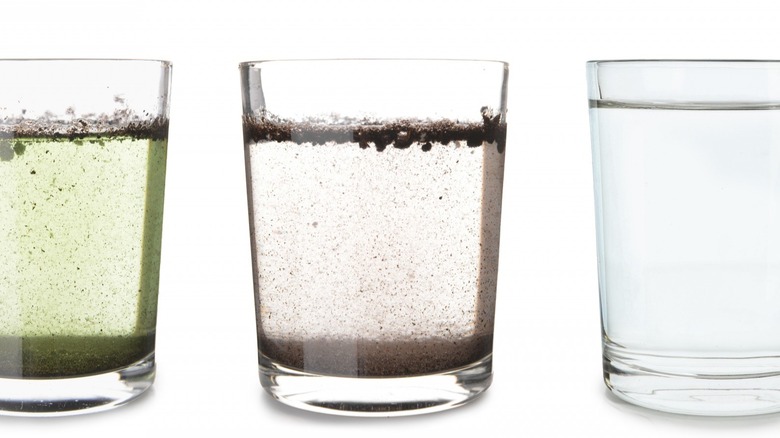Scientists May Have Found A Way To Treat Dangerous 'Forever Chemicals' In Water
It is estimated that millions of Americans drink contaminated tap water every year (via Science). According to the Environmental Protection Agency, the consumption of contaminated drinking water can lead to negative health consequences. For example, drinking water with a high level of chemicals can damage the nervous system, while consumption of water with smaller levels of chemicals over a long period of time may lead to a chronic illness like cancer. One class of chemicals traced to things found in nature — from human and animal blood to the air, drinking water, and soil — are potentially dangerous and tough to get rid of (per Environmental Protection Agency).
Per- and polyfluoroalkyl substances (PFAS) are a class of chemicals used in consumer and industrial production of products like cookware, cleaning products, and water-resistant fabrics (per Federal Drug Administration). PFAS, sometimes called forever chemicals, are a cause for health concern because they are difficult or resistant to breaking down in the environment, contaminate drinking water, and have been found in animals and humans. In fact, the American Association for the Advancement of Science (AAAS) says that the majority of people in the United States have at least one PFAS in their blood. Research has shown that PFAS affect immunity, metabolism, and hormone regulation (per AAAS).
Luckily, scientists may have found a way to treat these forever chemicals.
Forever chemicals no more?
There are thousands of PFAS, and most of them are not well studied. However, one type — Perfluorooctanoic acid (PFOA) — has been linked to a host of health consequences ranging from kidney and testicular cancer to decreased fertility and pregnancy complications (via American Association for the Advancement of Science). Due to these health concerns, the Environmental Protection Agency suggested the reduction and eventual elimination of PFOA emissions from the major companies that use them. Even with reduction measures, forever chemicals can still pervade the environment. Even worse, replacement chemicals like GenX — which may pose the same issues of resistance to break down and build up in humans — are taking the place of PFAS. But a team of researchers may have just found a way to break them down.
A 2022 study published in the journal Science may have discovered a simple technique to break down PFOA and GenX (per U.S. News and World Report). Using a relatively low temperature — 248 degrees Fahrenheit — researchers were able to break down the forever chemicals by placing them in dimethyl sulfoxide, then adding lye, water, and heat. While the technique may be able to treat drinking water, there's one monkey wrench — the chemicals need to be isolated from the water before they can be broken down. Researchers hope to find ways to make the process more efficient.


